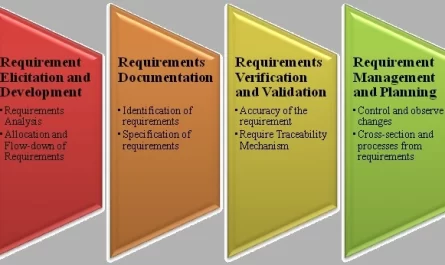Process improvement in TQM
Total Quality Management (TQM) is a concept created by W. Edwards Deming. It was originally introduced in Japan after World War II to help the Japanese rebuild their economy. The main focus of TQM was continues quality improvement in the areas of product or service, employer-employee relations and consumer-business relationships. Total Quality Management is a management strategy that dates back to the 1950s and has been popular since the early 1980s. Total Quality management requirements can be defined separately for a specific organization or can meet established standards, such as the ISO 9000 series of the International Organization for Standardization. Total quality management can be applied to any type of organization; it originated in the production sector and has since been adapted for use in almost every conceivable type of organization, including schools, road maintenance, hotel management and churches.
Total Quality Management (TQM) is a philosophy of management that continuously improves the quality of products / services / process quality by claiming the needs and aspirations of customers to improve customer satisfaction and performance of the company. TQM can be defined as an ongoing search for excellence by creating the right skills and attitudes to people to make it possible to prevent defects and satisfy customers / users at all times. TQM is an organization-wide activity that should reach every individual within an organization.
The six steps are:
· Process selection
Process Selection is to select a small and achievable number of processes, most directly influencing the achievement of the organization’s goals and objectives, upon which to undertake process improvement activity. This can take anywhere from a few hours to weeks, be either proactive, e.g., management initiative, or reactive, e.g., customer complaint, and involve one or several people.
· Process Understanding
Process Understanding, covering the scope of the process – where it starts and ends, what is included and excluded. In addition, the key sub-processes and accountabilities of the process to the organization must be understood.
· Process Performance
Process Performance involves recording and detailing the historical performance of the process, obtaining perceptual views of both current and historical performance from customers and suppliers, defining the agreed required performance of the future improved process, and agreeing how it will be measured, monitored and reviewed.
· Process Review
In Process Review, the data and information that has been collected and analyzed is reviewed and recommendations made for the improved process. Several tools, such as Cause and Effect, Pareto and Force Field Analysis can be used in this step, and are covered in the Tools section.
· Process Change
Process Change translates the prioritized process improvement mandates into an integrated programmed of continuous improvement or processes re-design activity. Detailed project plans with milestones, objectives, performance measures and targets, benefits, roles and deliverables must be developed, as well as a plan to manage the change and train all necessary personnel in the new process.
· Capturing the Change
In the final capturing the Change step, the process improvements are integrated into the business management system, ensuring the change is reviewed, managed and built upon. Procedures should be written for the improved process, the changes, improvements and benefits communicated to all stakeholders, any training conducted, and the process and procedures regularly audited.
Process improvement in Total Quality Management




